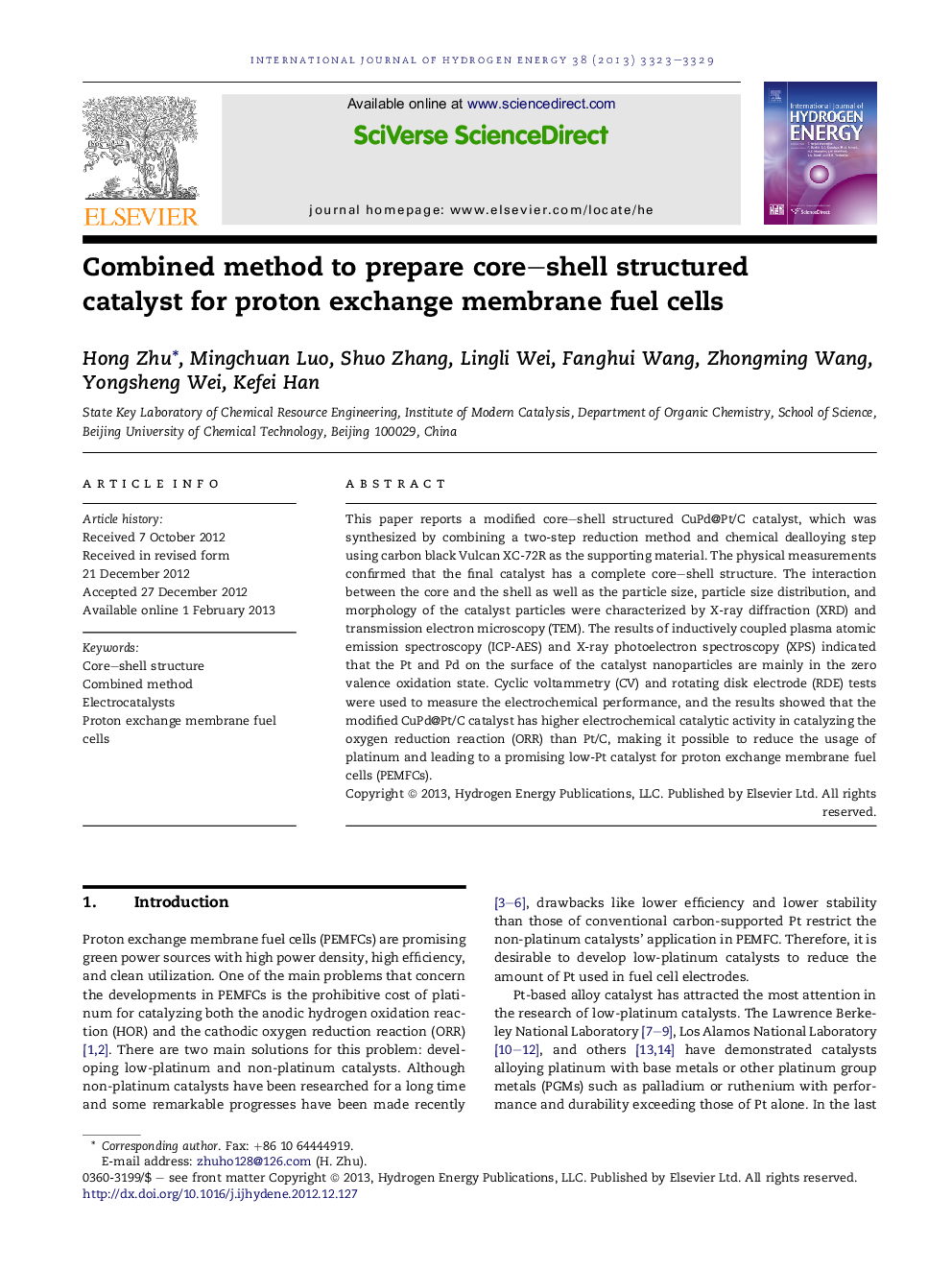| Article ID | Journal | Published Year | Pages | File Type |
|---|---|---|---|---|
| 1275749 | International Journal of Hydrogen Energy | 2013 | 7 Pages |
This paper reports a modified core–shell structured CuPd@Pt/C catalyst, which was synthesized by combining a two-step reduction method and chemical dealloying step using carbon black Vulcan XC-72R as the supporting material. The physical measurements confirmed that the final catalyst has a complete core–shell structure. The interaction between the core and the shell as well as the particle size, particle size distribution, and morphology of the catalyst particles were characterized by X-ray diffraction (XRD) and transmission electron microscopy (TEM). The results of inductively coupled plasma atomic emission spectroscopy (ICP-AES) and X-ray photoelectron spectroscopy (XPS) indicated that the Pt and Pd on the surface of the catalyst nanoparticles are mainly in the zero valence oxidation state. Cyclic voltammetry (CV) and rotating disk electrode (RDE) tests were used to measure the electrochemical performance, and the results showed that the modified CuPd@Pt/C catalyst has higher electrochemical catalytic activity in catalyzing the oxygen reduction reaction (ORR) than Pt/C, making it possible to reduce the usage of platinum and leading to a promising low-Pt catalyst for proton exchange membrane fuel cells (PEMFCs).
Graphical abstractOur synthesis can not only avoid leaving some amount of Pt in the core but also make sure there is no Cu, which has little electrochemical catalytic activity, on the surface.Figure optionsDownload full-size imageDownload as PowerPoint slideHighlights► A modified core–shell structured catalyst was prepared by combined method. ► The Cu atoms on the surface of CuPd@Pt/C can delay the rate of ORR. ► Pt and Pd are mainly in the zero valence oxidation state. ► The modified CuPd@Pt/C catalyst shows superior electrocatalytic activity.
